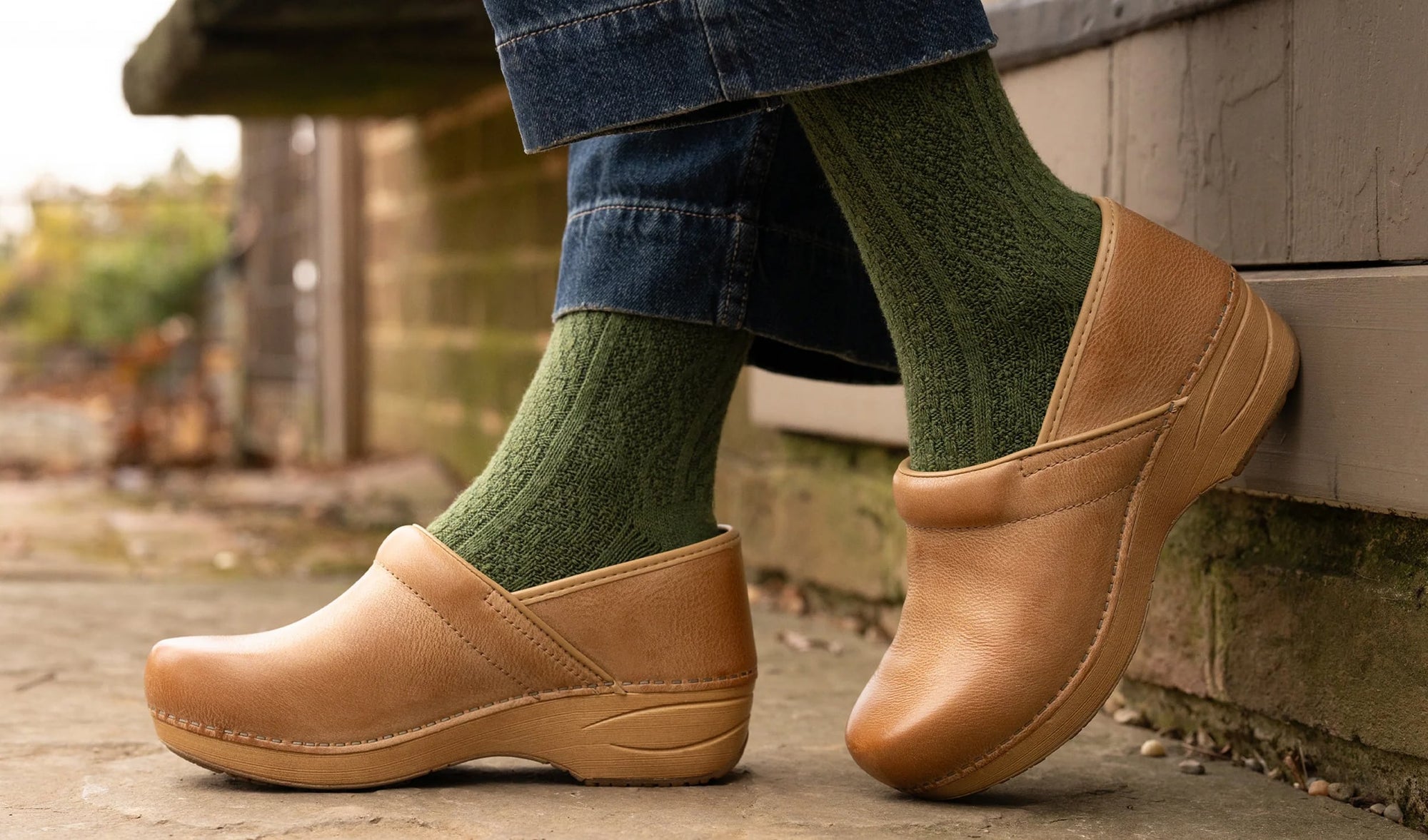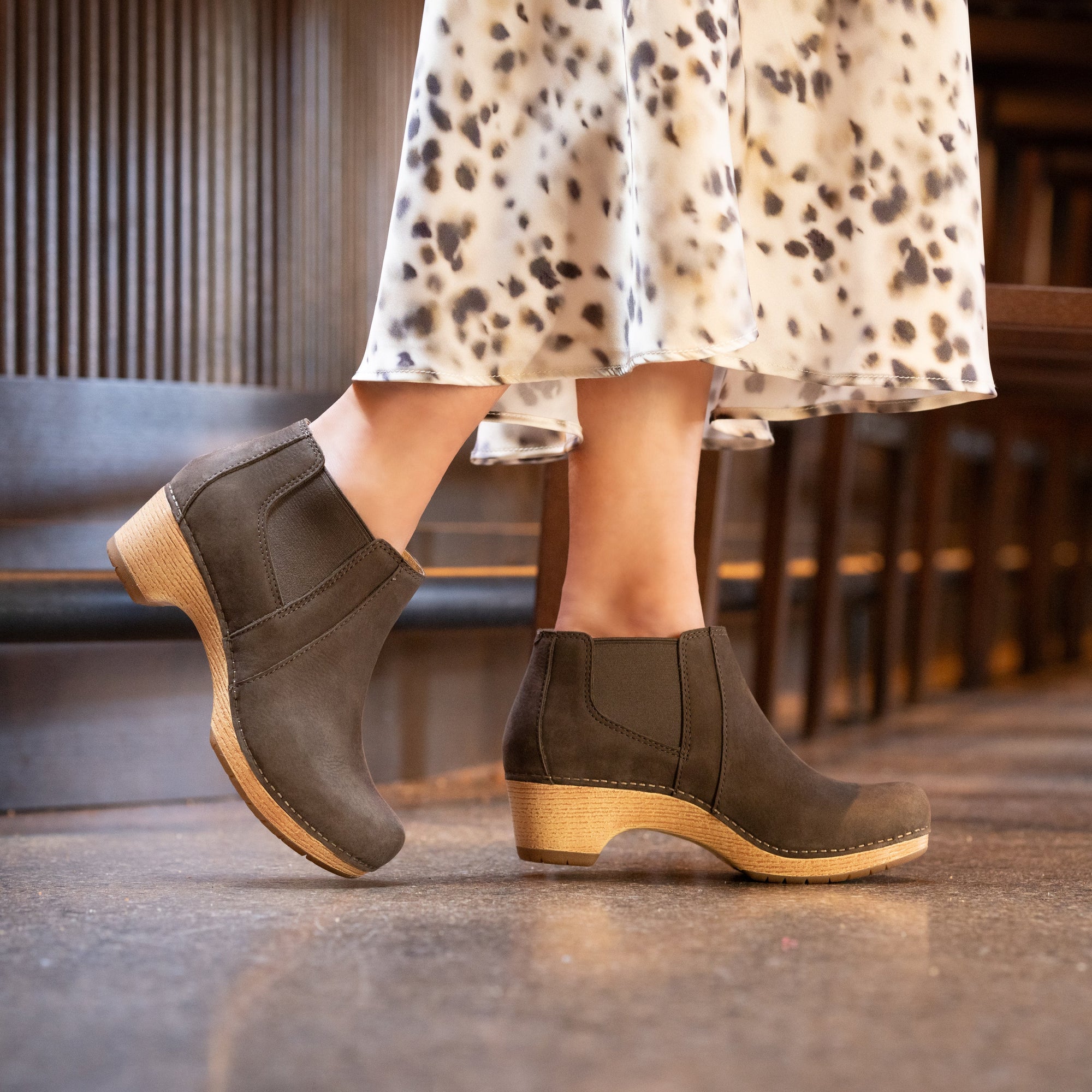Slip-resistant shoes play a vital role in promoting safety, especially for people who work in fast-paced or slippery environments. Whether you're in a hospital hallway, restaurant kitchen, or outdoor setting, having the right footwear can make all the difference.
Slip-resistant shoes are designed with specialized materials and tread patterns that increase grip and reduce the likelihood of slipping on dry, wet or oily wet surfaces. This added traction helps prevent workplace accidents, supports better movement, and gives wearers confidence with every step.
From healthcare professionals to culinary experts and retail workers, more and more people are looking for ways to improve safety and stability at work and home. Knowing how to make shoes slip resistant, and understanding what features matter most, can help you stay supported wherever life takes you.
Key Materials Used in Slip-Resistant Shoe Design
Materials matter when it comes to reliable traction. The best materials for slip-resistant are those that provide both flexibility and friction, two essential qualities for solid ground contact.
Rubber remains the gold standard in slip resistant soles. Its soft yet durable composition allows it to grip smooth surfaces better than harder plastics or synthetics. Natural and synthetic rubber blends are often used in high-performance outsoles for their balance of comfort and durability.
Advancements in footwear technology have introduced other slip-resistant materials, such as EVA (ethylene-vinyl acetate) with added grip compounds or rubber infused with silica. These innovations boost traction while maintaining a lightweight feel, perfect for people on their feet all day.
At Dansko, we use high-quality rubber outsoles and innovative tread patterns to create stable, dependable shoes that help prevent slips in real-life work conditions.
Techniques to Enhance Shoe Grip
Already own a pair of shoes but need more traction? There are several techniques for improving grip, depending on the type of footwear.
Many manufacturers use precision-molded outsole patterns that channel liquids away from the foot, reducing the chance of hydroplaning. Deep grooves, cross-hatch textures, and pivot-point designs help shoes perform well on a variety of floor types.
Traction-enhancing techniques are part of every step in Dansko’s design process. From initial concept to finished product, we use advanced shoe traction techniques and materials to ensure each pair supports you in high-movement environments.
Comparing Anti-Slip Shoe Technologies
Not all slip-resistant features are created equal. While some brands rely solely on rubber soles, others use full systems designed to optimize grip from heel to toe.
Dansko shoes incorporate slip-resistant shoe technology tested for effectiveness on wet, oily wet, and dry surfaces. This includes rubber outsoles with enhanced tread designs and grooves that adapt to uneven ground. Our XP 2.0 line, for example, includes slip-resistant features combined with lightweight comfort, a popular combination for professionals in healthcare and hospitality.
Some shoe brands also offer slip-resistant coatings that can be applied post-manufacture. While this method can help increase grip for certain shoe types, it’s not always a substitute for engineered slip-resistant soles. For long-term safety, built-in materials and tread designs, like those used for our healthcare mules, are more reliable.
When comparing different slip-resistant technologies, always consider how and where you’ll be using the shoe. Some options perform better indoors, while others excel outdoors or in fast-moving environments.
Maintenance and Care for Slip-Resistant Shoes
To ensure continued performance, it's important to take good care of your slip-resistant shoes. Over time, dirt, grease, and wear can reduce traction, especially if shoes are not cleaned regularly.
Use a soft brush to remove debris from the tread. For a deeper clean, gently wipe the soles with a damp cloth and mild soap. Avoid using harsh chemicals that could damage rubber or degrade anti-slip coatings.
Store your shoes in a cool, dry place to prevent warping or rubber deterioration. As with all footwear, the grip will gradually fade with use, especially in high-wear areas. Keeping an eye on your tread pattern can help you decide when it’s time for a replacement.
Proper care helps preserve the effectiveness of slip-resistant shoes and ensures long-term safety and comfort.
Step Forward with Confidence
Slip-resistant shoes can help you move more confidently and comfortably through every part of your day. With advancements in tread design and sole materials, there are more options than ever to match your footwear to your lifestyle.
At Dansko, we focus on designing shoes that offer support and comfort in every environment. Whether you’re working in the healthcare, culinary, or education sectors, our slip-resistant work shoes include design elements focused on comfort and support throughout the day.
Knowing how to make shoes slip resistant is just the first step. Choosing the right pair built with purpose-designed materials and grip-enhancing features can help you stay steady and supported, wherever you go.



